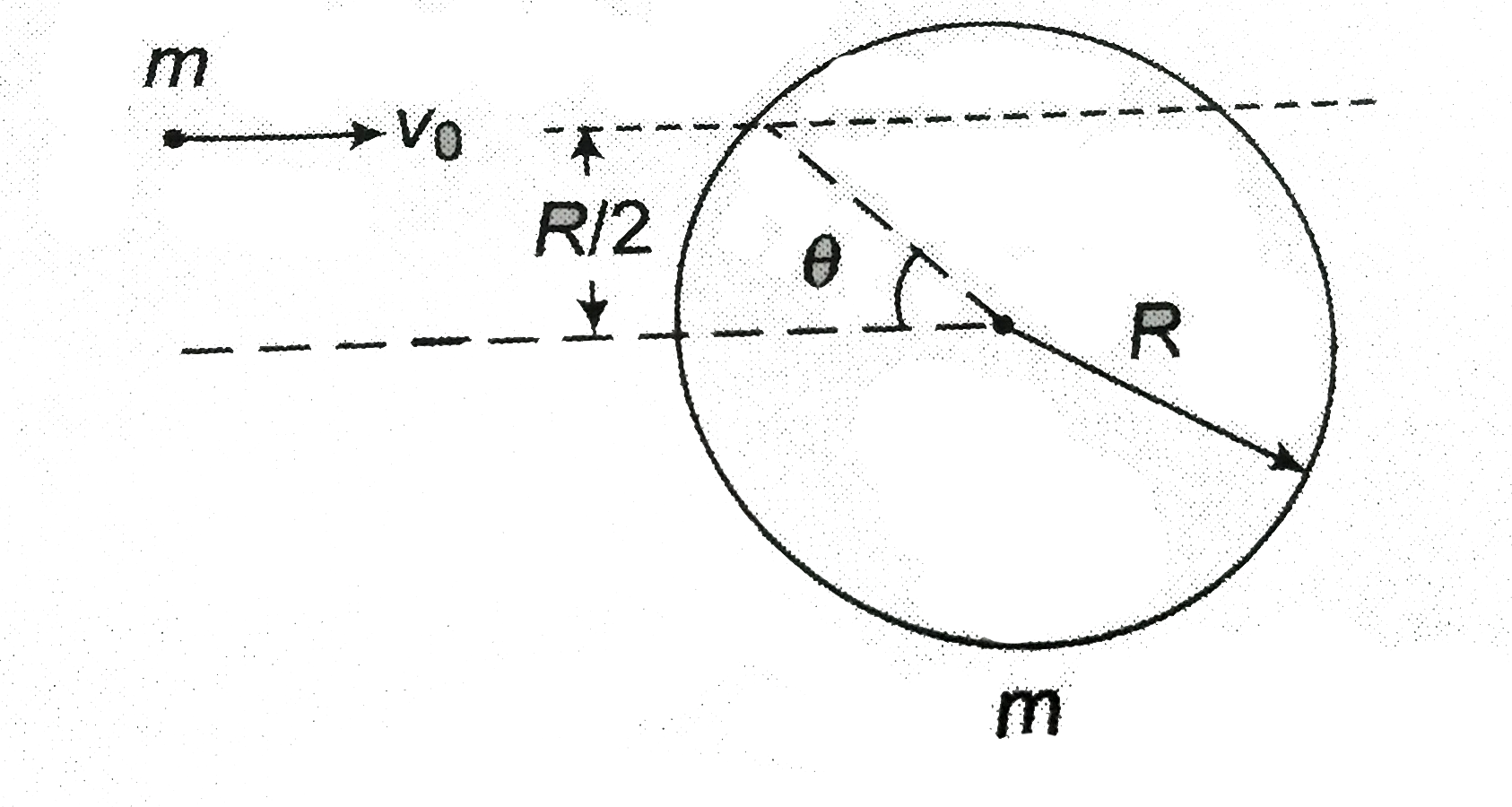A proton moving with a velocity of collides with a neutron at rest. If collision is prefectliy elastic, then after collsion, what are the velocities of porton and neutron?
As mass of porton and neutron are (almost) equel, therefore on perfectly elastic collsion between then. Their velocities are exchange, i.e., velocity of neutron , and
velocity of porton=zero.
Topper's Solved these Questions
Similar Questions
A particle of mass m moving with velocity v0 collides with sphere of same mass at rest , as shown. If the surface of contact is smooth and the collision is elastic, find the velocities of particle and sphere after the collision.
 View Solution
View SolutionA neutron of mass 1.67×1027 kg moving with a speed of 3×106ms−1 collides with a deutron of mass 3.34×10−27 kg which is at rest. After collision, the neutron sticks to the deutron and forms a triton. What is the speed of the triton?
View Solution
Knowledge Check
- Question 1 - Select One
A body of mass 'm' moving with certain velocity collides with another identical body at rest. If the collision is perfectly elastic and after the collision both the bodies moves
Ain the same directionBin opposite directionCin perpendicular directionDat 45∘ to each other - Question 2 - Select One
A heavy truck moving with a velocity of 60km/h collides with a light drum at rest. If the collision is elastic, then the velocity of the drum immediately after collision will be
AzeroB60km/hC120km/hD30km/h - Question 3 - Select One
A proton moving with a velocity of 0.125×105ms−1 Collides with a stationary helium atom. The velocity of the proton after the collision is
A0.75×105ms−1B7.5×105ms−1C−0.75×105ms−1D0ms−1
A particle of mass m moving with velocity u collides elastically head on with a particle of mass 2m at rest. After collision the heavier particle moves with velocity?
View SolutionA body of mass 4kg moving with velocity 12m/s collides with another body of mass 6kg at rest. If two bodies stick together after collision , then the loss of kinetic energy of system is
View SolutionThe first ball of mass m moving with the velocity υ collides head on with the second ball of mass m at rest. If the coefficient of restitution is e, then the ratio of the velocities of the first and the second ball after the collision is
View SolutionA body of mass m1 moving with a velocity 3m/s collides with another body at rest of m2 . After collision the velocities of the two bodies are 2m/s and 5m/s , respectively , along the direction of motion of m1. The ratio m1/m2 is
View SolutionA 0.10-kg cart traveling in the positive x direction at 10.0 m/s collides with a 0.30-kg cart at rest. The collision is elastic. What is the velocity of the 0.10-kg cart after the collision?
View Solution

